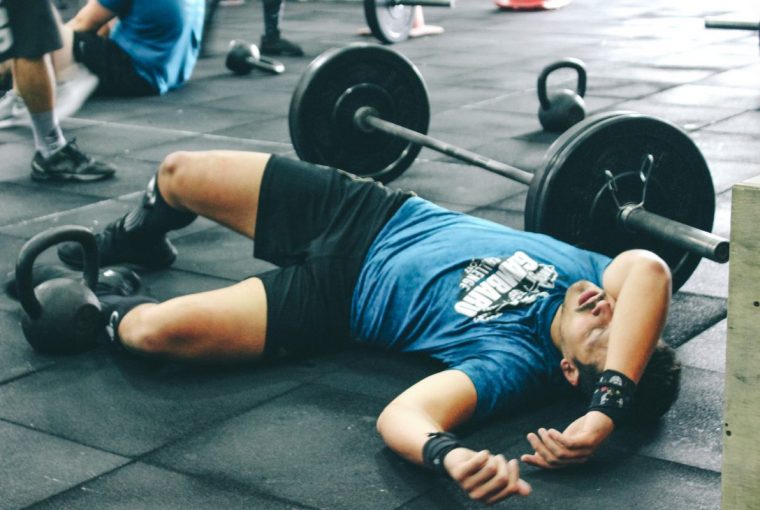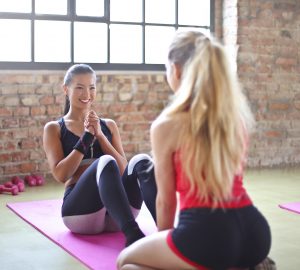As physiotherapists, we are fascinated by the intricate movement of the human body. More specifically, working with people that are having issues with certain movements and helping to improve their overall function. This is also the foundation for CrossFit, as it is defined by constantly varied functional movements performed at high intensity. These movements include a combination of Olympic weightlifting, power lifting, and gymnastics. As with any full range of motion, high repetition, high speed movement, there is an increased risk of injury.
The biggest threat to an individual occurs when movement technique falls apart due to lack of knowledge, athlete fatigue, or moving too much load. The main contributors to this are ego, poor coaching, and movement faults which are caused by a lack of mobility, stability and motor control.
Ego: we couldn’t write this article and leave ego out of it, but we won’t go into much detail as to not ruffle too many feathers. We’re athletes, and we get it. But as far as injury prevention goes, never sacrifice the quality of a movement to push through more reps or to try and finish faster than your buddy who is crushing the WOD next to you. This responsibility first falls directly on the individual athlete. As soon as you walk into any CrossFit gym you will quickly learn that all egos must be checked at the door. With that said, its possible that in the heat of competition you may have a temporary lapse in focus. We’re all guilty of it!
This is where the coach comes in. Many gyms strongly encourage that new members complete an introductory program prior to jumping into regular classes. This ensures that athletes have the basic knowledge, can perform all movements safely, and understand the appropriate scaling options. This is the first step in preventing any future injuries. The coach is also responsible to do all that they can to ensure movement is safe and that proper scaling is always used.
Next, lets talk about what the CrossFit athlete can do to minimize the chance of injury. The basis for all CrossFit movements can be broken down into three movement archetypes:
- Hip Hinge
- Squat
- Shoulder Press / Overhead Shoulder Position
By maintaining good form in these three components of movement, your chances of injuring yourself is greatly reduced! These movements can be destroyed by lack of mobility, stability or motor control in the athlete. There are entire books out there on fixing the aforementioned issues however, in order to keep this concise and relevant, we will discuss these three archetypes and how they should look.
Hip Hinge
- Neutral spine (back straight), core braced, slight bend in the knees, bend forward at the hips without moving the spine. If this is performed correctly, then you should feel tension develop through the posterior chain (glutes and hamstrings).
- This movement pattern is crucial in performing the deadlift, clean, snatch, med ball clean, kettlebell swing.
Squat
- Neutral spine (back straight), core braced, push the knees outwards over the toes (think “screw your feet into the ground”), maintain the weight on the heels, move your butt back first (think “sitting down”), maintain the knee position through the full range of motion.
- The above movement pattern is crucial in performing the air squat, back squat, front squat, overhead squat, wall ball, thruster, squat clean, squat snatch, box jump.
Shoulder Press / Overhead Shoulder Position
- Shoulder blades pulled back and down (think “put the shoulder blades in the back pockets”), arms fully locked out overhead, push the shoulders into external rotation (armpits forward), maintain a stabilized neck with good posture.
- This movement pattern is crucial in performing the strict press, push press, push jerk, split jerk, overhead squat, snatch, pull up, toe to bar, muscle up, handstand push up, handstand walk.
If you are a competitive or a frequent CrossFitter and find you are having trouble achieving and maintaining any of these three positions then it is a good time to seek some help. Work with your CrossFit coach or a physiotherapist who understands the complex movements that are required. The key point in injury prevention is to never sacrifice your form to have more weight on the bar, or to move faster through a workout! If you feel like your form is falling apart on any of these movements then something must be modified. You are either dealing with a flexibility issue, have too much weight on the bar, or your movement pattern needs some work. The coach or therapist should be able to determine if your problem is related to mobility, stability or motor control, and then provide you with the tools you need to remedy this problem. As physiotherapists, we want to not only keep you doing as much as possible in the gym; but to get you back in the gym moving better, faster and stronger than ever before, with minimal chance of injury!
By Aaron Norris and Arri McWatt – Optimize Physiotherapy & Sports Injury Clinic




